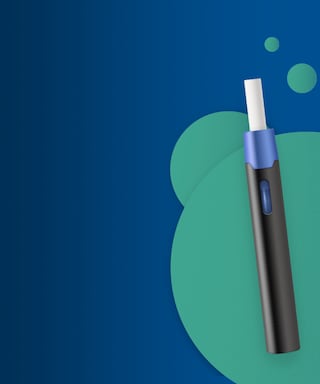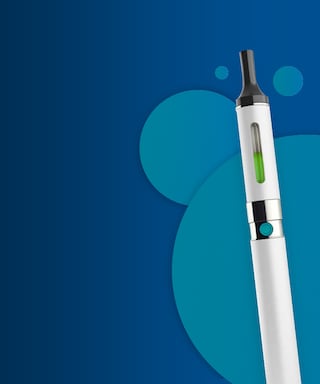To achieve our vision of a smoke-free future, providing those adults who would otherwise continue to smoke with a wide choice of better alternatives to cigarettes is key. So, what sets apart each of the main smoke-free categories?
PMI has spent more than a decade developing innovative better alternatives to smoking to help move every adult smoker away from cigarettes.
Our vision is of a smoke-free future—and, to date, we’ve invested over USD 12.5 billion toward this ambition. But we know that to consign cigarettes to the past, we need every adult who would otherwise continue to smoke to leave behind cigarettes for good.
To achieve this, offering this vast and diverse group a range of smoke-free alternatives across different product categories is vital, because no single solution will meet the preferences of every adult who smokes cigarettes—or cater to every price point.
That why’s our growing smoke-free portfolio includes a variety of heated tobacco, e-vapor, and oral smokeless products, all of which are backed by robust science to demonstrate their benefits for adults compared with continued smoking. These products are not risk-free and provide nicotine which is addictive. But, as they are all smoke-free, they represent a better choice for adults than continuing to smoke.
So, how do the smoke-free product categories differ?

All about: Heated tobacco products
All about: Heated tobacco products
PMI’s heated tobacco products—also known as heat-not-burn products—are electronic smoke-free devices that eliminate combustion by heating tobacco instead of burning it.
Using an innovative system, our range of devices release a flavored nicotine-containing vapor that, when inhaled, contains significantly lower levels of harmful chemicals compared to cigarettes.
Heated tobacco products don’t create fire, ash, or smoke, but still deliver nicotine, which is naturally present in tobacco.
Watch: The problem with burning
It's a well-known fact that cigarette smoking is harmful and causes serious disease. But not everyone knows why that is.

The problem with burning
Upbeat instrumental music starts
Why burning is the main problem
When tobacco is burnt, it can reach temperatures of around 900 degree Celsius.
It’s this extreme temperature that’s one of the problems with smoking
Burning breaks down the tobacco and produces smoke which contains more than 6,000 chemicals.
Around 100 of these chemicals have been identified by public health experts as causes or potential causes of smoking -related diseases.
Because there is no combustion in smoke-free products,
They have the potential to be better alternatives than continued smoking
*This is subject to scientific substantiation on a product-by-product basis.
The best choice any smoker can make is to quit cigarettes and nicotine use altogether.
Smoke-free alternatives are only for adult smokers who would otherwise continue smoking.
They are not risk-free and contain nicotine, which is addictive.
Music ends
Nicotine is one of the characteristics—along with taste and ritual—adult smokers look for in alternative products. It is addictive and not risk-free, but it is not the primary cause of smoking-related diseases.
The primary cause is burning tobacco. This creates smoke, which exposes cigarette users to over 6,000 chemicals—of which about 100 have been identified as causes or potential causes of smoking-related diseases, such as lung cancer, cardiovascular disease, and emphysema.
Heated tobacco products are fundamentally different from cigarettes because there is no smoke or secondhand smoke.
Our science shows they are not risk-free but represent a far better choice for adult smokers than continuing to smoke cigarettes.

All about: Vapes and vaping
All about: Vapes and vaping
Unlike heated tobacco products, e-vapor products—otherwise known as vapes or e-cigarettes—don’t use tobacco.
Our e-vapor products are filled with an e-liquid containing nicotine and flavors. The battery-powered devices heat the liquid to generate an e-vapor, which the user inhales.
Like our heated tobacco products, they don’t generate smoke or secondhand smoke, and our range of e-vapor products emit significantly lower levels of harmful chemicals compared to cigarettes.
Watch: The difference between cigarette smoke and smoke-free product vapor
Cigarette smoke and smoke-free vapor are two very different types of aerosol.

The difference between cigarette smoke and smoke-free product vapor
You may have noticed a white cloud that comes from using a smoke-free alternative.
But is it the same as smoke?
The Simple Answer?
The simple answer is no.
Cigarette smoke and smoke-free product vapor are fundamentally different.
Let's take a look at what sets them apart.
Cigarette Smoke
Cigarette smoke is produced when tobacco is burned.
The smoke contains solid particles.
It also has high levels of harmful chemicals, many of which are considered the main cause of smoking related diseases.
Vapor
On the other hand, vapor is produced when a user activates a smoke free product like an e-cigarette or a heated tobacco device, by inhaling.
It's not smoke because there is no burning involved and it doesn't contain solid particles.
It should contain much lower levels of harmful chemicals compared to cigarette smoke.
Why does this matter?
Because recognizing the fundamental difference between cigarettes and smoke-free alternatives would be a significant step toward a future without cigarettes.
To find out more visit pmi.com/SmokeVsVapor.
In September 2022, a major independent review of 400 published studies found that vaping is substantially less harmful than smoking, and smokers who switched would experience a substantial reduction in the toxic substances that cause cancer, lung disease, and cardiovascular disease.
This supports our own robust science, of which key elements have been corroborated in other independent studies on better alternatives to smoking by the scientific community.

All about: Snus, snuff, and nicotine pouches
All about: Snus, snuff, and nicotine pouches
Oral smokeless products include snus, snuff, and nicotine pouches.
Nicotine pouches are made primarily of nicotine and flavors, while snus contains smokeless tobacco. Both are wrapped in a cellulose pouch, which is placed between the gum and the cheek or upper lip.
The nicotine is then absorbed through the oral mucosa. These products are not risk-free and provide nicotine, which is addictive.
Watch: The facts and the misconceptions about Nicotine
Nicotine is a chemical that occurs naturally in tobacco. It is addictive and not risk-free. However, contrary to some beliefs, nicotine is not the primary cause of smoking-related diseases.

What is nicotine?
Percussion music starts
What is nicotine?
Nicotine occurs naturally in tobacco leaves and can be extracted by heating, burning or soaking the plant
Nicotine is addictive but is it not the primary cause of smoking related diseases.
Once inhaled, it is absorbed straight into the bloodstream where it travels through the body and to the brain
Nicotine binds itself to specific receptors and triggers the release of dopamine, which boosts attention but could also cause reward-seeking behavior.
Nicotine has short-term pharmacological effects, including increased heart rate and blood pressure.
It can take anywhere between 2 and 18 hours for nicotine to leave the body.
Nicotine should never be taken by adolescents, pregnant women or people with heart conditions
The best choice any smoker can make is to quit cigarettes and nicotine use altogether.
Smoke-free alternatives are only for adult smokers who would otherwise continue smoking.
They are not risk-free and contain nicotine, which is addictive.
Music ends
Both products are inherently smoke-free and are a natural addition to our portfolio of smoke-free nicotine products, further enabling us to provide a variety of better alternatives suited to every adult smoker.
While the best choice for any smoker is to quit tobacco and nicotine use altogether, we will continue to develop better alternatives to smoking that will make it easier for adult smokers to abandon cigarettes—if they don’t quit cigarettes and nicotine completely.
It is only by doing this that we can achieve a significant milestone in public health—a smoke-free future.
|Learn more about snus, snuff, and nicotine pouches|



